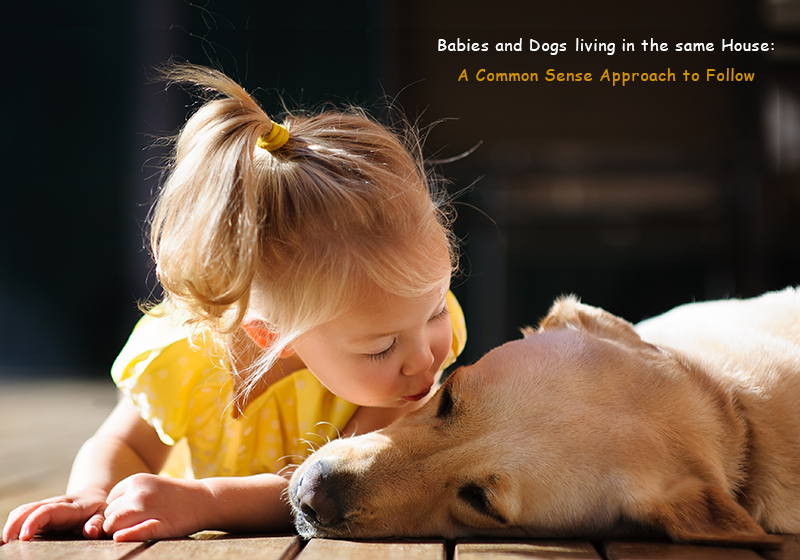Your baby and family dog are sitting on the floor and your baby is playing with some toys. You are reading a novel and the next thing you hear is a short rumble of a snarl accompanied by cries of your baby. When you divert your attention you see your baby bitten on the face by your four-legged friend and then a thought flashes in your mind: Why in the hell did the pooch bite my baby? This incident happens quite often in our country.
In fact, an independent research conducted estimated that approximately 5 million dog bites every year out which nearly half of them are babies and children. On top of this, further stats prove that two thirds of dog bites amongst children happen on the head and neck requiring plastic surgery in most cases.

So what is this thing between babies and dogs which turns these warm and friendly canines into an aggressive beast in front of babies who are not even able to defend themselves? The reason for that is babies are about the same size as a doggie or even smaller than them. But your dog is not intimidated by them as they are not of the same size and stature as you. Hence, in their anxiety and fear your tyke bites babies. Dogs are animals after all and even the best of animal can act in an unpredictable manner due to reasons best known to them.
Now, seeing the tyke turned aggressive towards your baby can give you a goose bump for sure and you even think about him giving up as a last resort. But before taking this extreme step, consider what might happen to your four-legged friend if he is sent to the shelter house. Due to previous bad behavior, he may not get another home. In the worst situations, he might be put to rest, which is a very bad thing. So how do you counter the situation?
Precondition your pooch before the baby is born
Before the baby is born, prepare your pooch for things to come. Train him to endure future interactions with the baby by poking at his nose with your fingers, tug his ears softly and pull his fur. Once he tolerates the action give him a treat so that he associates the experience without growling as a positive thing. Crawl on the floor as a toddler to accustom your pet about the things to come.
Take prompt action if the pooch growls at the baby
Immediately take help of other adults and ensure that the bay is out of reach of the dog. Get the pooch to the other room. Never punish your pooch instead be glad that he expressed his displeasure through a warning instead of a bite. Keep the baby away from the dog all the time. Have baby gates around the house so that your tyke can roam freely. When the baby falls asleep ensure that the room is shut and let the dog hang around with adults under supervision.
Take obedience training from dog trainers
Consult a behavior specialist to devise a training program. Attend obedience classes to socialize your pooch and prepare them for unforeseen circumstances. Learn these strategies and then apply them on your dog. Once he obeys, give him treats.
Understand the body language of the pooch along with the warning signs. Once you understand these cues, it will become much easier to protect your baby from dog bites in the future.
